Safety is paramount in hockey, a sport renowned for its high speed and physical contact. A player’s most critical piece of safety equipment is, without a doubt, the helmet.
As technology has advanced, so too have the designs of hockey helmets, which now offer better protection while incorporating features for comfort and usability. Let’s delve into the various types of hockey helmets available on the market today.
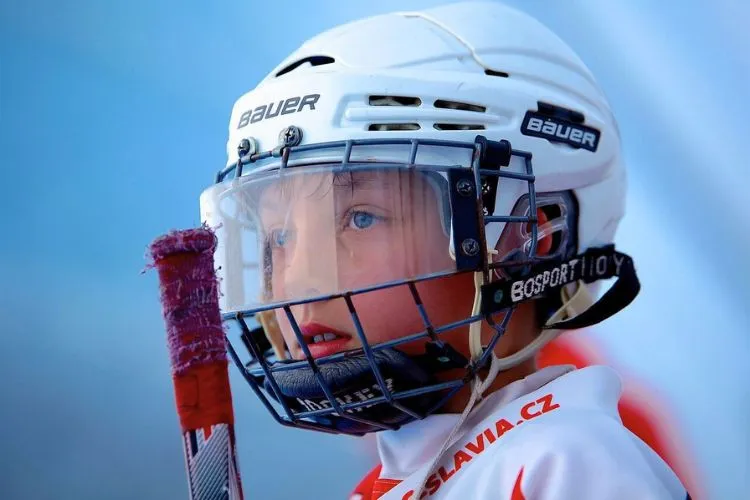
Importance of Choosing the Right Helmet
Hockey is a sport where the risk of head injuries is ever-present. It is vital for players to wear helmets which not only protect them from impacts but also fit well.
A helmet that is too loose can come off during play, while one that is too tight can be uncomfortable and distract from the game. The right helmet balances protection with comfort, ensuring players can focus on their performance with peace of mind.
Types of Hockey Helmets
Single-Piece Helmets

Single-piece helmets are crafted from a single shell of material, providing a robust barrier against impacts. Their one-piece construction is seen by many as offering superior durability and a higher level of protection.
The lack of moving parts can reduce the risk of a helmet coming apart during critical moments. Yet, this design often lacks the adjustability provided by more modular helmets, potentially making it harder for some players to find an ideal fit.
Two-Piece Helmets
The two-piece helmet is an evolution of design that separates the shell from the protective padding inside. This separation allows for more customization of fit, as the liner can be adjusted to conform more closely to the player’s head.
Players often find these helmets offer a level of comfort without sacrificing the protection they need on the ice. However, these helmets may require more maintenance to ensure that all pieces remain securely in place.
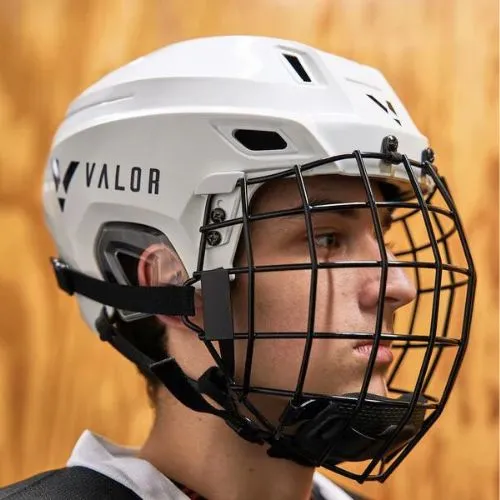
Combo Helmets
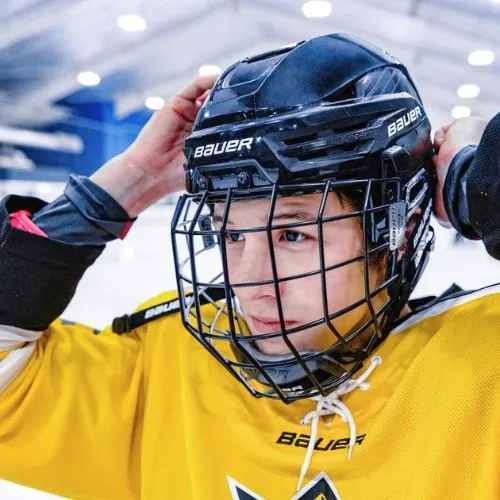
Combo helmets are integrated solutions that combine the helmet with face protection, often a visor or cage.
They make it simpler for players by removing the need to buy and attach separate pieces. While convenient, these helmets may offer less flexibility for players who have a preference for specific kinds of face protection.
The built-in features must also be assessed for their field of vision and air circulation.
Customizable and Adjustable Helmets
Helmets that offer extensive customizable features can cater to any player’s needs. Adjustable helmets come with various options to change the fit, tightness, and even the padding’s position.
This flexibility means they can provide a snug fit for a wide range of head sizes and shapes, ensuring that players of all levels can find a helmet that feels as though it was made just for them.
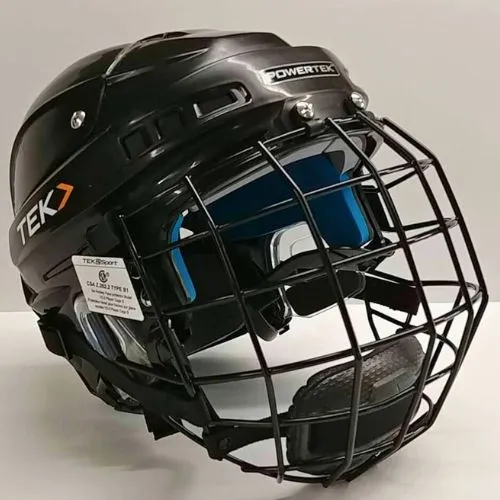
Youth Helmets
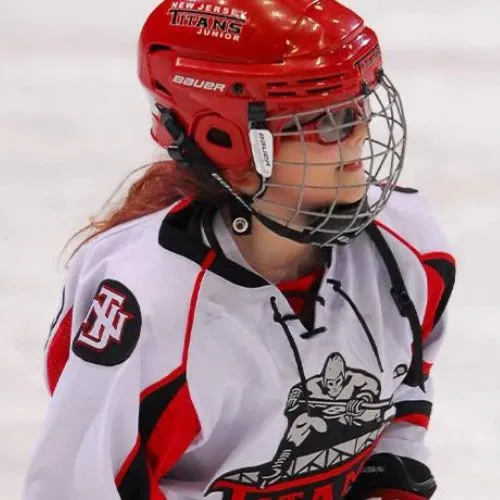
Young players need helmets that can accommodate their developing bodies. Youth helmets are designed to offer robust protection with a focus on fitting smaller head sizes.
They often come with additional adjustability to keep up with a child’s growth.
It’s crucial for parents and coaches to ensure that youth helmets are properly fitted to each child to provide maximum protection throughout their growth spurts.
Key Features to Consider
Protection Levels
Certifications such as those from the Hockey Equipment Certification Council (HECC) and the Canadian Standards Association (CSA) indicate that a helmet has passed rigorous safety tests.
Players should look for these certifications when selecting a helmet to ensure it meets official safety standards.
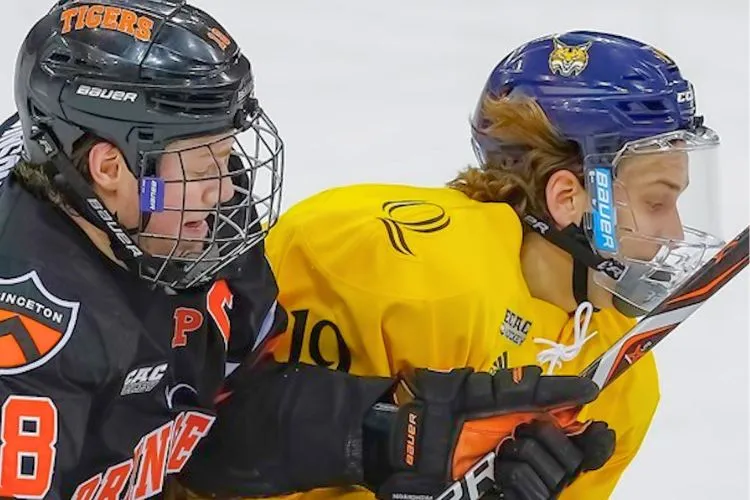
Comfort and Fit
A helmet must fit properly to provide maximum protection. It should sit on the head comfortably, without pinching or squeezing, and should not rotate when fastened. A well-fitting helmet will stay securely in place while allowing for a full range of head movements.
Ventillation
Good ventilation is key in a helmet’s design, as it prevents players from overheating and helps keep them comfortable throughout the game. Air flow through the helmet helps keep the head cool and helps maintain focus during play.
Weight
A heavy helmet can strain a player’s neck and shoulders, leading to fatigue. Modern helmets aim to offer the highest protection while minimising weight, ensuring players don’t have to sacrifice comfort for safety.
Visor Compatibility
For those who opt for helmets without built-in face protection, visor compatibility is an important consideration.
A good hockey helmet should allow for the easy attachment of a visor or cage, giving players the flexibility to choose the type of face protection they prefer.
Pro Tips for Choosing a Hockey Helmet
To find the best helmet, players should try on various models and sizes to find one that feels just right. Knowledgeable staff at specialized stores can provide valuable advice on fitting and adjustment.
Additionally, it is essential to inspect helmets regularly for damage and replace them following significant impacts or according to the manufacturer’s guidelines to maintain a high level of protection.
Maintaniance and Care
A well-maintained helmet can last longer and provide consistent protection. It’s important to regularly clean the helmet, check for cracks or wear, and to replace it if it is compromised. Staying on top of maintenance will keep the helmet in top condition and players safe on the ice.
You may also read: Types of Ice Skates: Choosing the Best Fit for Your Needs
Frequently Asked Questions (FAQs)
How often should I replace my hockey helmet?
Replace your hockey helmet at least every 5 years or immediately if you notice visible damage, significant wear, or after a severe impact, even if no damage is visible.
Can I use a hockey helmet for other sports?
It’s not recommended. Hockey helmets are designed specifically for hockey’s types of impacts and may not offer adequate protection for other sports.
What’s the difference between a hockey helmet and a multi-sport helmet?
A hockey helmet is engineered for ice hockey’s specific impact types and game conditions, while multi-sport helmets may not meet the same protective standards required for hockey.
How do I know if my helmet fits correctly?
A correctly fitting helmet should be snug yet comfortable, not shift when you move your head, and should sit on the forehead just above the eyebrows without tilting back.
Are more expensive helmets safer?
Not necessarily. Look for HECC, CSA, or other relevant certifications rather than price. Standards compliance is a better safety indicator than cost.
Conclusion
Selecting the right type of hockey helmet is a critical decision for any player. With the variety of options available, from single-piece helmets for durability to adjustable models for a perfect fit, there is a helmet to meet every player’s needs.
Remember to prioritize safety, comfort, and certification when choosing a helmet, and perform regular maintenance to ensure ongoing protection.

Matthew James is a passionate skater who wanted to create a platform to share his love for skating with others. With a vision to create a vibrant community of skaters, he aims to provide a space where skaters of all levels can connect, learn, and grow together.
